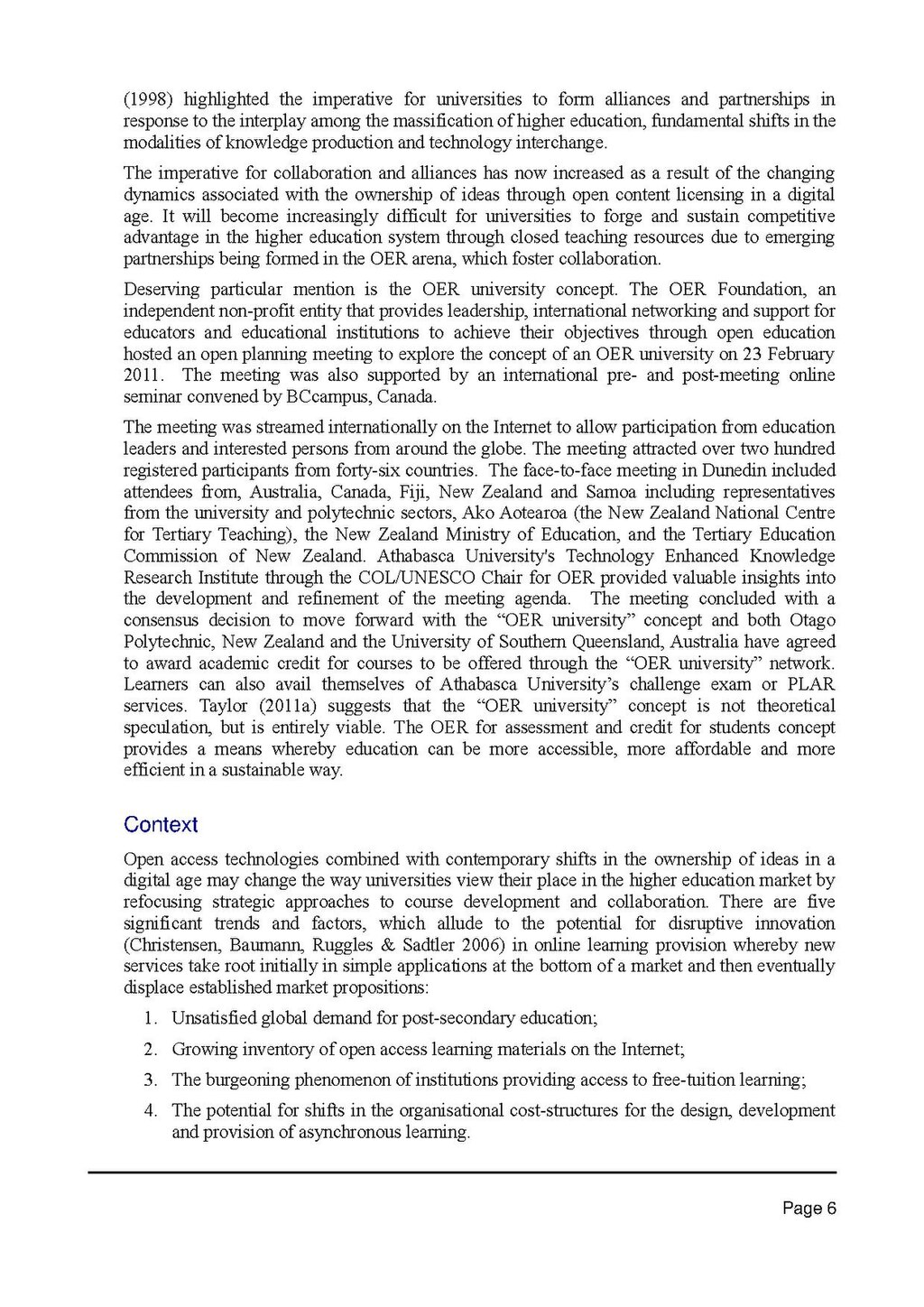(1998) highlighted the imperative for universities to form alliances and partnerships in response to the interplay among the massification of higher education, fundamental shifts in the modalities of knowledge production and technology interchange.
The imperative for collaboration and alliances has now increased as a result of the changing dynamics associated with the ownership of ideas through open content licensing in a digital age. It will become increasingly difficult for universities to forge and sustain competitive advantage in the higher education system through closed teaching resources due to emerging partnerships being formed in the OER arena, which foster collaboration.
Deserving particular mention is the OER university concept. The OER Foundation, an independent non-profit entity that provides leadership, international networking and support for educators and educational institutions to achieve their objectives through open education hosted an open planning meeting to explore the concept of an OER university on 23 February 2011. The meeting was also supported by an international pre- and post-meeting online seminar convened by BCcampus, Canada.
The meeting was streamed internationally on the Internet to allow participation from education leaders and interested persons from around the globe. The meeting attracted over two hundred registered participants from forty-six countries. The face-to-face meeting in Dunedin included attendees from, Australia, Canada, Fiji, New Zealand and Samoa including representatives from the university and polytechnic sectors, Ako Aotearoa (the New Zealand National Centre for Tertiary Teaching), the New Zealand Ministry of Education, and the Tertiary Education Commission of New Zealand. Athabasca University's Technology Enhanced Knowledge Research Institute through the COL/UNESCO Chair for OER provided valuable insights into the development and refinement of the meeting agenda. The meeting concluded with a consensus decision to move forward with the "OER university" concept and both Otago Polytechnic, New Zealand and the University of Southern Queensland, Australia have agreed to award academic credit for courses to be offered through the "OER university" network. Learners can also avail themselves of Athabasca University's challenge exam or PLAR services. Taylor (2011a) suggests that the "OER university" concept is not theoretical speculation, but is entirely viable. The OER for assessment and credit for students concept provides a means whereby education can be more accessible, more affordable and more efficient in a sustainable way.
Context
Open access technologies combined with contemporary shifts in the ownership of ideas in a digital age may change the way universities view their place in the higher education market by refocusing strategic approaches to course development and collaboration. There are five significant trends and factors, which allude to the potential for disruptive innovation (Christensen, Baumann, Ruggles & Sadtler 2006) in online learning provision whereby new services take root initially in simple applications at the bottom of a market and then eventually displace established market propositions:
- Unsatisfied global demand for post-secondary education;
- Growing inventory of open access learning materials on the Internet;
- The burgeoning phenomenon of institutions providing access to free-tuition learning;
- The potential for shifts in the organisational cost-structures for the design, development and provision of asynchronous learning.
